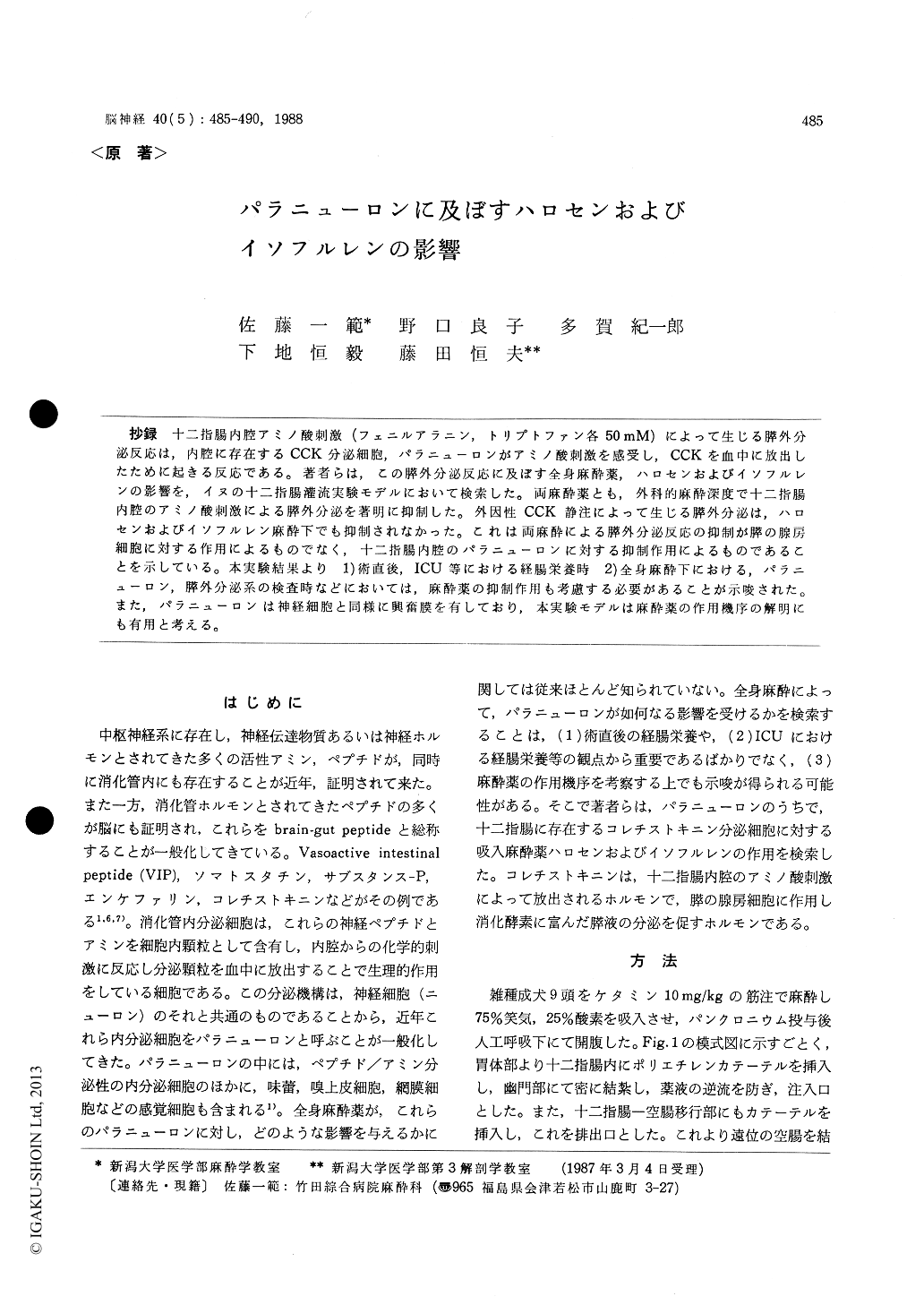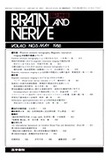Japanese
English
- 有料閲覧
- Abstract 文献概要
- 1ページ目 Look Inside
抄録 十二指腸内腔アミノ酸刺激(フェニルアラニン,トリプトファン各50mM)によって生じる膵外分泌反応は,内腔に存在するCCK分泌細胞,パラニューロンがアミノ酸刺激を感受し,CCKを血中に放出したために起きる反応である。著者らは,この膵外分泌反応に及ぼす全身麻酔薬,ハロセンおよびイソフルレンの影響を,イヌの十二指腸灌流実験モデルにおいて検索した。両麻酔薬とも,外科的麻酔深度で十二指腸内腔のアミノ酸刺激による膵外分泌を著明に抑制した。外因性CCK静注によって生じる膵外分泌は,ハロセンおよびイソフルレン麻酔下でも抑制されなかった。これは両麻酔による膵外分泌反応の抑制が膵の腺房細胞に対する作用によるものでなく,十二指腸内腔のパラニューロンに対する抑制作用によるものであることを示している。本実験結果より1)術直後,ICU等における経腸栄養時2)全身麻酔下における,パラニューロン,膵外分泌系の検査時などにおいては,麻酔薬の抑制作用も考慮する必要があることが示唆された。また,パラニューロンは神経細胞と同様に興奮膜を有しており,本実験モデルは麻酔薬の作用機序の解明にも有用と考える。
Administration of amino acid solution (50 mM tryptophane and phenylalanine in saline) into the canine duodenum is known to cause an increase in pancreatic secretion. This response is mediated by the excitation of duodenal endocrine cells, paraneurons, which release cholecystokinin (CCK)into the systemic circulation in response to intra-luminal amino acid stimuli. Pancreatic secretory cells are then evoked by the CCK in the blood to secrete the juice into the duodenum. The authors investigated the effects of two general anesthetics, halothane and isoflurane, on this response. Nine mongrel dogs were subjected to this study. Each dog underwent laparotomy under nitrous oxide (75%) -oxygen (25%) anesthesia with pancuronium (GO-Pb). The duodenal loop was exposed and two polyethylene cannulae (18Fr) were introduced into the loop. Proximal cannula was for the admini-stration of the amino acid solution into the loop, and distal one was for drainage of the solution. The pancreatic duct was inserted with a polyethy-lene catheter, through which pancreatic juice was collected and measured for the volume and protein output by spectrophotometry. After these surgical procedures, the pancreatic secretory response to intraluminal amino acid stimuli was examined under GO-Pb (Control). Then halothane (1. 0%) (Group 1, four dogs) or isoflurane (2.0%) (Group 2, five dogs) was administered for 30 min and the same response was tested.
The pancreatic secretory response to intralumi-nal amino acid stimulus was suppressed by the surgical concentrations of both halothane (1.0%) and isoflurane (2.0%). Neither halothane nor isoflurane suppressed the pancreatic secretory response evoked by intravenous CCK infusion (10 Ivy Dog Units). The results indicate that both anesthetics affect the duodenal paraneurons which release CCK, but not the pancreatic cells respon-ding to the hormone. Thus, the study suggests that the suppressive effects of both anesthetics on the duodenal paraneurons must be considered for the management of patients who receive enteral nutrition during the perioperative period or in the intensive care unit and also for the examination of pancreatic secretory response under general anesthesia. Further, the present experimental arrangement might provide a simple model for investigation of anesthetic effects on the activities of neurons and transmitter release.

Copyright © 1988, Igaku-Shoin Ltd. All rights reserved.


